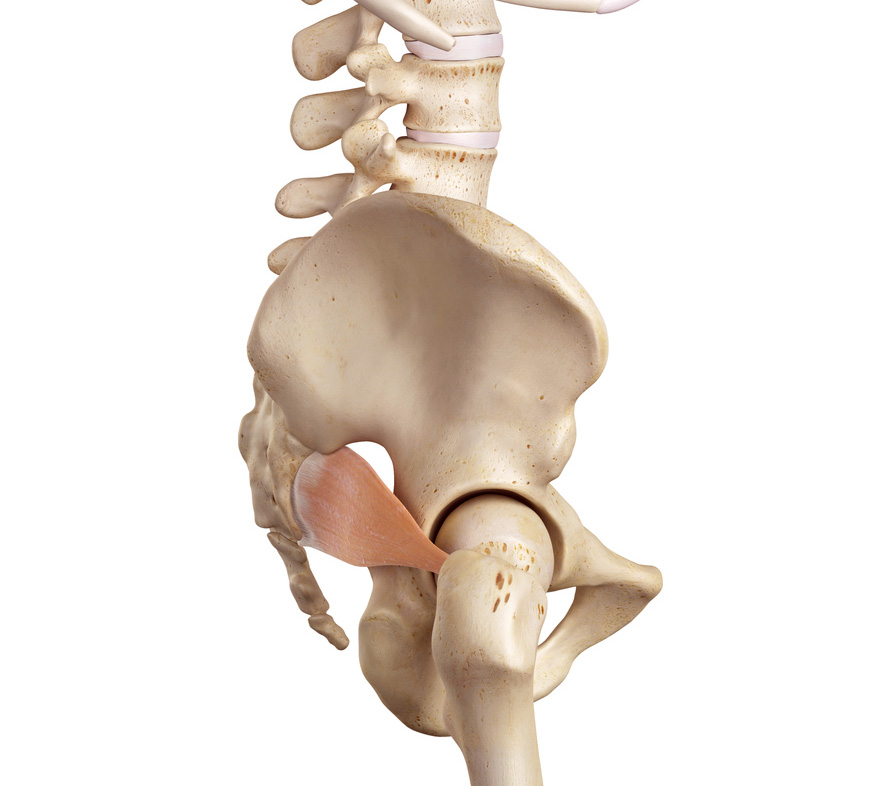[vc_row][vc_column width="1/1"][vc_column_text]By: Dr. Corey Finan BSc., DC, CCSP, RMT, ART
In order to properly treat piriformis syndrome, it is important to understand that the piriformis muscle is either spasming, or is inflamed. Both situations can cause their own problems. If you are getting numbness down your leg, the muscle is probably spasmed. A spasmed muscle can cause local pain as well, so hip pain with numbness down the leg is a very common presentation of piriformis syndrome. An inflamed muscle will cause the sciatic nerve that sits in close proximity to it to also get inflamed in some cases. When this occurs, you will typically feel pain in the hip along with a burning pain radiating down your leg.
Understanding which situation is causing your particular symptoms can allow your practitioner to accurately treat it. For example, a spasmed muscle will require work on the muscle to relax it, and techniques such as Active Release, Shockwave Therapy (in chronic cases), deep tissue massage and even Dry Needling (IMS) can help. These all work to relax the spasm. Home stretching would also be of benefit.
Active Release Techniques or ART is the gold standard for soft tissue treatment and is extremely effective at treating piriformis syndrome. The practitioner starts with your muscle in a shortened position, and your leg is then moved to bring the muscle into a lengthened position while the doctor’s thumb tensions the muscle in the direction opposite to the muscle. Think of a string with beads on it. If you want to remove the beads, you would place your thumb beside the bead, and pull on the string. The shear force generated unwinds the tightened muscle, causing the release of tension. Hence the name Active Release.
Shockwave Therapy utilizes a compressive pulse of air that generates a shockwave to disrupt the muscle and create a release of tension. It is the equivalent to about 5 times a normal ultrasound wave. Thus it is a significant pulse created into the soft tissues of the hip to cause the spasm to decrease. It is great for chronic conditions, but is ineffective for new injuries.
Dry needling can be used to release the spasm from the inside out. Using an acupuncture needle, the practitioner can insert the needle right into the spasmed part of the muscle causing a local twitch response that in effect resets the electrical tone of the muscle back to the baseline, causing a release in the muscle tension. It can be fast and effective, but it does not lengthen the muscle like Active Release does, so you run the risk of the spasm coming back again.
Deep tissue massage is great at releasing muscle spasms through active massaging of the affected muscle, and if a stretch component is added by the therapist it can be very effective. It is considered a passive treatment, and unfortunately if the muscle is not also lengthened, then the same results as dry needling can occur where the spasm recurs.
If the muscle is inflamed, then things change somewhat in regards to care. First and foremost, Active Release can still be performed to help release the muscle tightness or inflammation, and cause increased blood flow, oxygen flow and create and environment for healing. On top of active release, low intensity laser can be extremely helpful in reducing the inflammation. If it is badly inflamed, we can also bring in the game ready ice compression machine which will circulate near freezing water through a compressive cuff (similar to a blood pressure cuff) and cool down the hip muscles removing deep and/or plentiful inflammation.
Any and all of the following treatments for Piriformis Syndrome can be found at AST. If you are suffering from piriformis syndrome quit suffering and give us a call.
*This blog is not intended to officially establish a physician-patient relationship, to replace the services of a trained physician, naturopathic doctor, physical therapist or chiropractor or otherwise to be a substitute for professional medical advice, diagnosis, or treatment. [/vc_column_text][/vc_column][/vc_row]


